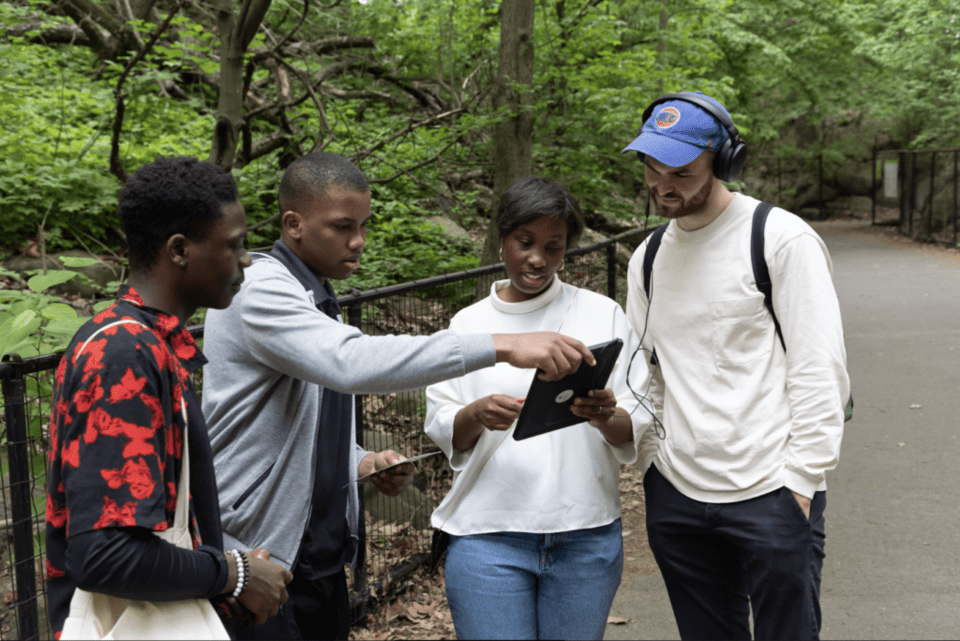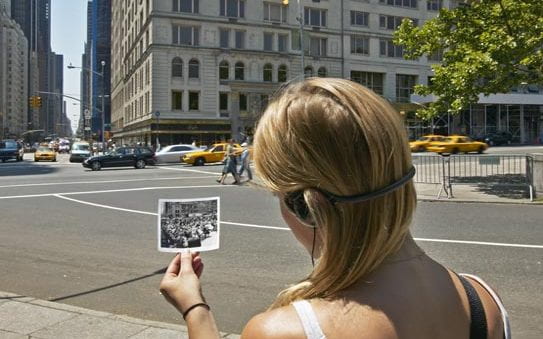Walking in arts practice
Flâneuse>La Caminanta – Amanda Gutiérrez
https://vrwalkers.org/
Flâneuse>La caminanta is a video documentary edited as a VR (virtual reality), using a 360-degree camera to document soundwalks of female participants in the public space. The title emphasizes a missing word in the French and Spanish language of women as wanderers. This lost world also represents the lack of inclusiveness in which the female-identifying bodies can safely perceive their autonomy as walkers. The VR environment exposes the perspective of participants navigating urban landscapes in Mexico City, Abu Dhabi, NYC, and Brooklyn through short conversations while we walk in their space. The locations selected by participants and have personal meaning in their everyday journeys on the relationship of inclusiveness, safeness, vulnerability, and empowerment.

Francis Alys – Magnetic Shoes
https://improvisedlife.com/2019/02/22/francis-alys-magnetic-shoes-walking-drifting-strolling-kind-resistance/
During the 5th Havana Biennial, artist Francis Alys put on his magnetic shoes and took daily walks through the streets of the city, collecting scraps of metal lying in his path. The resulting video is mesmerizing, charming, dreamy, relaxing, thought-provoking, and a beautiful quiet commentary on walking a city.
How Walking Fosters Creativity: Stanford Researchers Confirm What Philosophers and Writers Have Always Known
https://www.openculture.com/2015/07/how-walking-fosters-creativity.html#google_vignette
“A certain Zen proverb goes something like this: “A five year old can understand it, but an 80 year old cannot do it.” The subject of this riddle-like saying has been described as “mindfulness”—or being absorbed in the moment, free from routine mental habits. In many Eastern meditative traditions, one can achieve such a state by walking just as well as by sitting still—and many a poet and teacher has preferred the ambulatory method.”
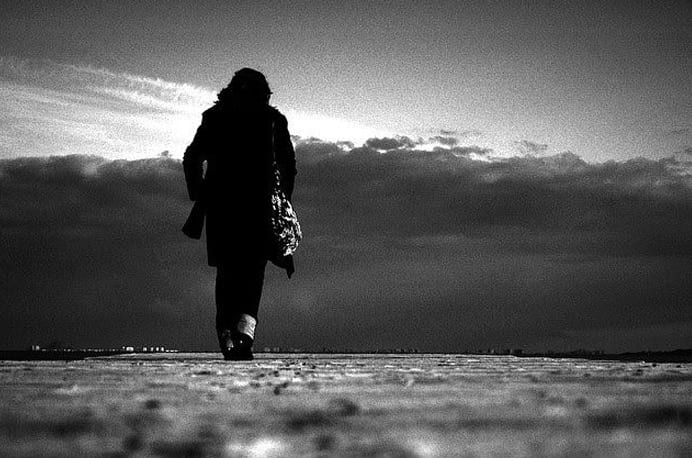
Matt Jensen
https://jensen-projects.com/site-specific-projects-and-walks/
Matthew López-Jensen is a Bronx-based interdisciplinary artist whose rigorous explorations of landscape combine walking, photography, mapping, and social practice. His projects investigate the relationships between people and local landscapes. He was a recent artist-in-residence with the NYC Urban Field Station, is a Citizen Pruner, community gardener, and part of the New York City Urban Forest Task Force.
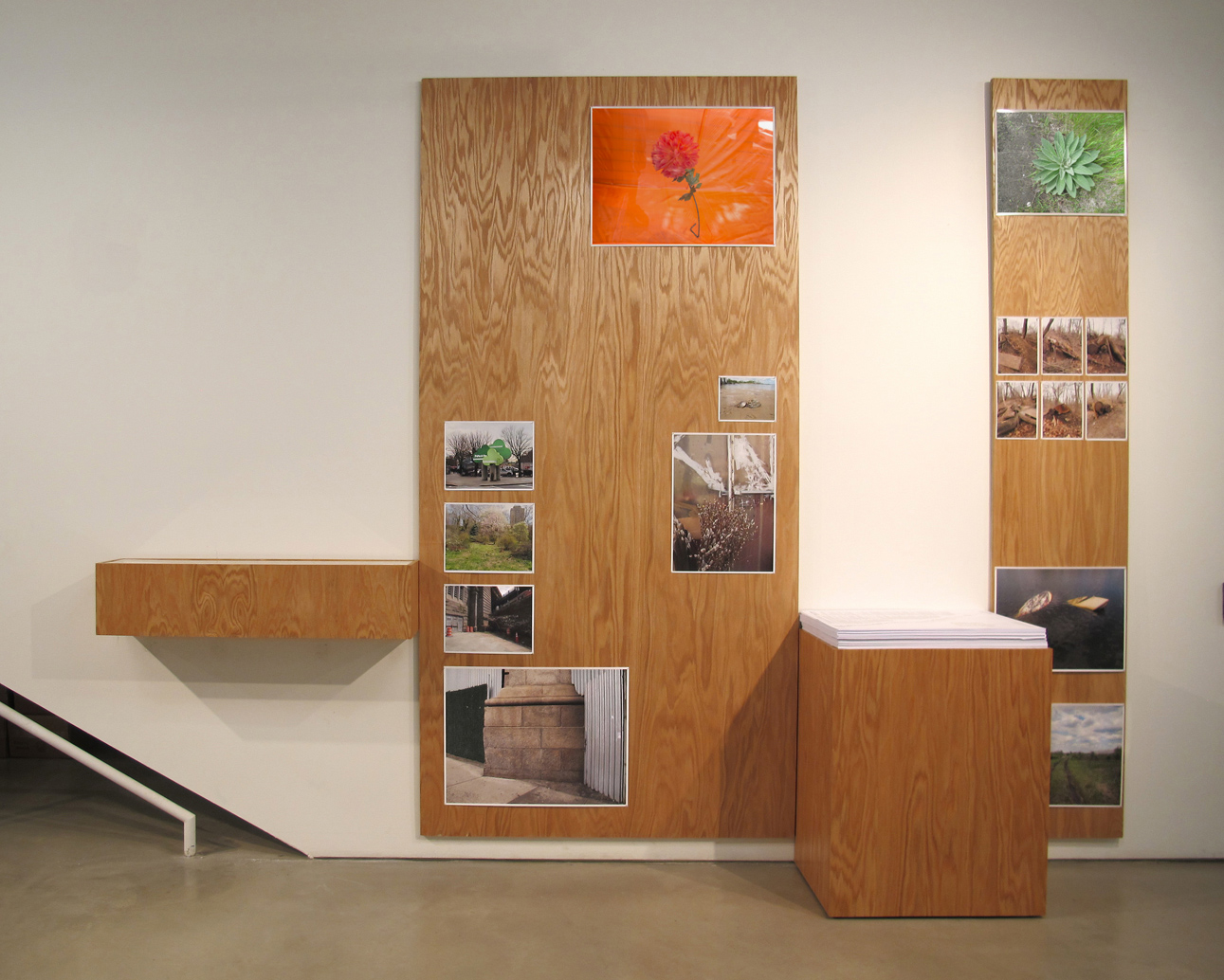
Museum of Walking
https://www.museumofwalking.org/
“an artist led educational resource center committed to the advancement of walking as an art practice.The Museum of Walking (MoW) is an educational resource committed to people, land, action, and site through the everyday act of walking.”

Walking With – Exhibition
https://www.walkingwith.ca
Twelve artists were invited to share their insights about how walking informs their practice. Walking With is a project that explores walking as a form of artistic inquiry and expression. Walking generates embodied knowledge through encounters with the dynamics of place. We become more of ourselves with each movement. Likewise, as we leave our trace, our presence shapes where we walk.

Walking as Artistic Practice – Ellen Mueller – Book
https://mailchi.mp/31906c18ab0a/walking-as-artistic-practice
“Walking as Artistic Practice lays out foundational information about the history of walking and its development as an artistic practice, making it accessible to readers of all backgrounds. It also provides guidance on how to analyze and discuss walking artworks, with vocabulary support, over three hundred examples, and over seventy-five exercises. The chapters offer a variety of topical approaches, allowing readers and instructors to craft an experience most suited to their interests and needs. Themes include observational and sensory experience, leading versus following, who walks where (identity and positionality), rituals, place, activism, connections to drawing, and embodiment. “
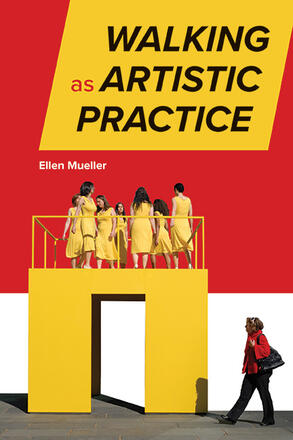
Walking Lab
https://walkinglab.org/
“WalkingLab is a SSHRC-funded international research-creation project co-directed by Stephanie Springgay (McMaster University) and Sarah E. Truman (University of Melbourne). WalkingLab studies and advances the theory and practice of critical walking methodologies through interdisciplinary arts practices and public walking events. The various projects and events activated at WalkingLab draw on feminist-queer, anti-racist, anti-ableist, and anti-colonial thought and practice to question who gets to walk where, how we walk, under whose terms, and what kind of publics we can make.”
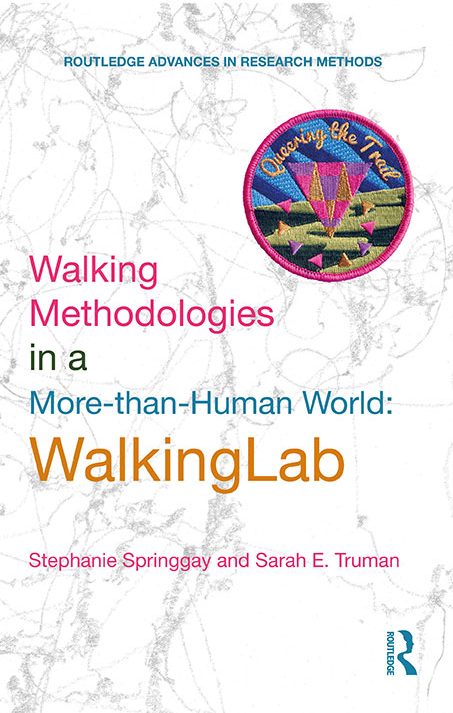
The podcast or “audio paper” as a means of academic scholarship in arts practice
The Podcast Studies Podcast – Mack Hagood of Phantom Power: Sound Studies & Scholarly Podcasting
https://open.spotify.com/episode/1qXdki6CYByFaT7OkoT8G7?si=9560adcce9fc4c63
Phantom Power is a benchmark academic podcast in terms of acoustic form and scholarly depth. Its focus is on the sonic arts and humanities and the show utilises all the myriad affordances of sound to explore scholarship and sound art. Mack and Dario unpack the joys and labors of academic podcasting, discussing the production process and the relationship between theory and practice which leads to discussion Mack’s chapter “The Scholarly Podcast: Form and Function in Audio Academia” recently published in Saving New Sounds: Podcast Preservation and Historiography edited by Jeremy Wade Morris and Eric Hoyt.
Spotify Podcast episode
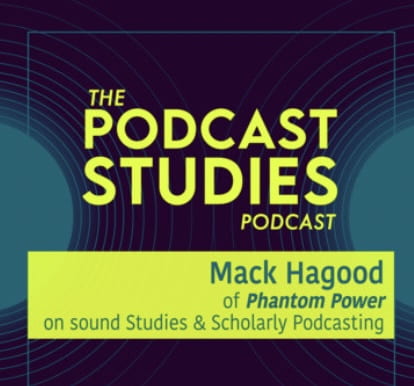
Audio Papers – A Manifesto
https://seismograf.org/fokus/fluid-sounds/audio_paper_manifesto
“Audio papers resemble the regular essay or the academic text in that they deal with a certain topic of interest, but presented in the form of an audio production. The audio paper is an extension of the written paper through its specific use of media, a sonic awareness of aesthetics and materiality, and creative approach towards communication. The audio paper is a performative format working together with an affective and elaborate understanding of language. It is an experiment embracing intellectual arguments and creative work, papers and performances, written scholarship and sonic aesthetics.”
Examples of Audio Papers
The New Amagerkaner
Between Maps and Territories
Hearing on the verge – Cuing and aligning with the movement of the audible
Mountain meets urban waterfront
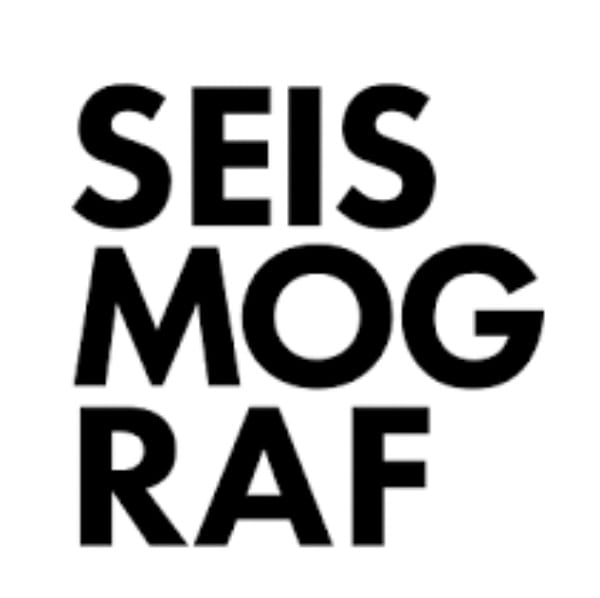
The City
Radical Walking Tours of NYC – Bruce Kayton
TNS library e-book [link here]
Few people know that Trotsky lived in New York just before the Russian Revolution. He lived in the Bronx and worked as a journalist in the East Village. This and many other intriguing facts are revealed in this new walking guide which eschews the usual guidebook fare and takes the reader to the battle sites of the class struggle. Illustrated with 30 b & w photographs.

The Social Life of Small Urban Spaces – William Whyte
TNS Library recording [link here]
A small group of observers, the “Street Life Project”, sets out to study how people use the parks and plazas of the city. With the help of time-lapse filming they find that what makes a place work are the basics–a place to sit, for example, food, sun, a passing show.

The Sonic Life of Cities – Michael Southworth (PDF)
https://drive.google.com/file/d/0B4w8kPKedvsVTjRVZXExVTJ2b0k/view?resourcekey=0-LZc8siir7XUsT0BgHp816g
…This study explores two aspects of the problem: What is the perceived variety and character of city sounds? How do sounds influence perception of the visible city? Our research is not a scientific experiment, but an exploratory study in which we have attempted to identify those issues that deserve more careful attention in later experimental research and city design.
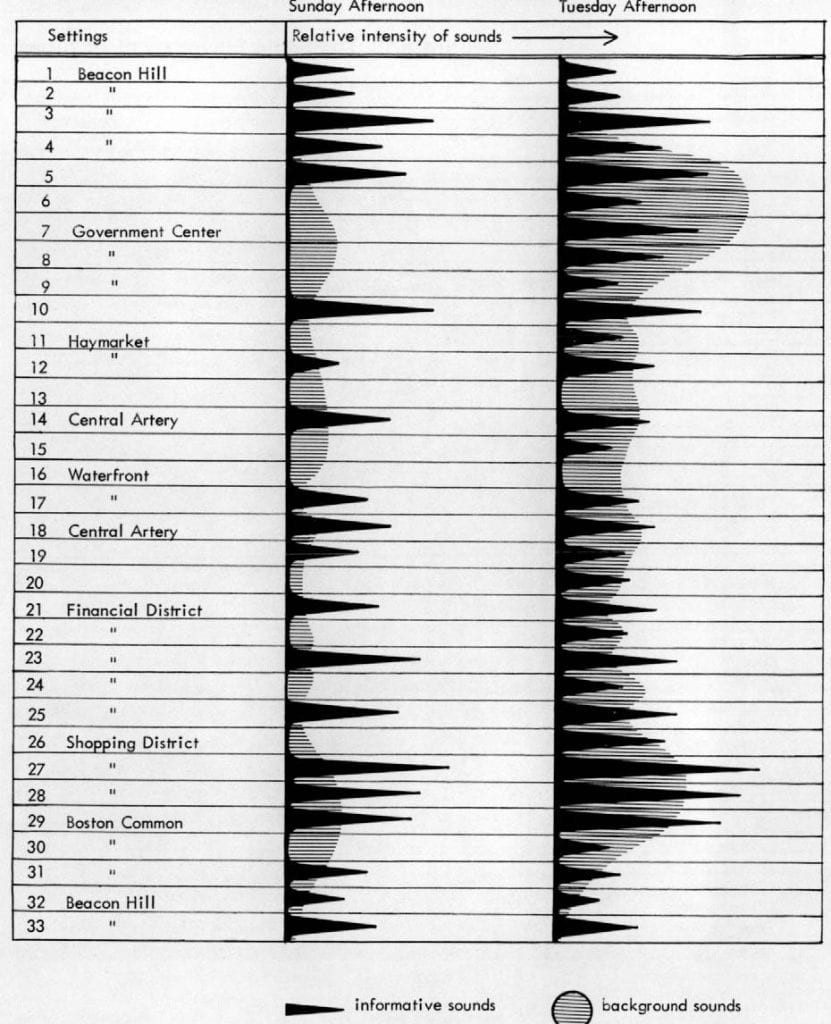
Walking in the City (from the Practice of Everyday Life) Michel DeCerteau (PDF)
https://public.wsu.edu/~hegglund/courses/548space/decerteau_practice.pdf
In this essay he elaborates on an analogy between urban systems and language, with improvisational walking (shortcuts, wandering, etc) being like turns of phrase, inside jokes, or stories. He states, “The act of walking is to the urban system what the speech act is to language or to the statements uttered.”
He describes the city as “a space of enunciation,” where walkers demonstrate possibilities through their walking choices. He states, “The walking of passers-by offers a series of turns and detours that can be compared to ‘turns of phrase’ or ‘stylistic figures.’ There is a rhetoric of walking.”

Walking, observation, and perception
Examined Life: Sunaura Taylor and Judith Butler
https://www.youtube.com/watch?app=desktop&v=k0HZaPkF6qE
Judith Butler and Sunaura Taylor went for a walk and engaged in a terrific conversation about disability as not merely some physical status but largely a social status, and that is also true for so called “able-bodied” persons.
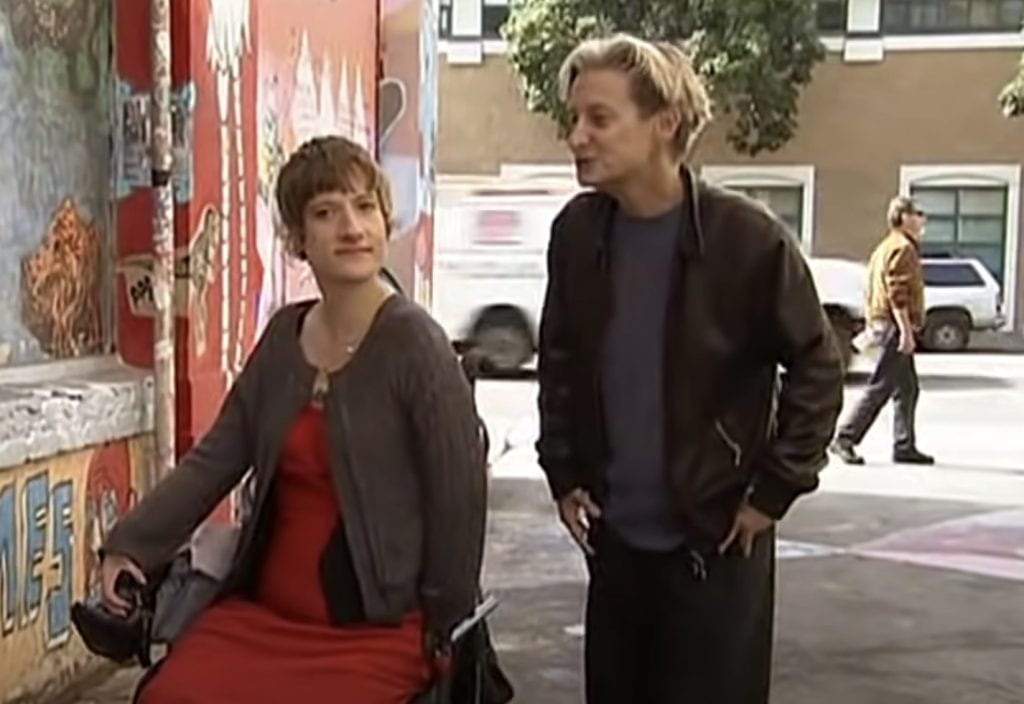
On Looking – A Walker’s Guide to the Art of Observation – Alexandra Horowitz
https://alexandrahorowitz.net/On-Looking
In this book in the author takes walks with people from different disciplines (typographer, architect, sound designer, etc) to explore their particular vantage point shapes their perception. (it all begins with her dog and her child)

Wanderlust: A History of Walking – Rebecca Solnit
TNS library e-book [link here]
A passionate, thought-provoking exploration of walking as a political and cultural activity, from the author of Orwell’s Roses Drawing together many histories–of anatomical evolution and city design, of treadmills and labyrinths, of walking clubs and sexual mores–Rebecca Solnit creates a fascinating portrait of the range of possibilities presented by walking….
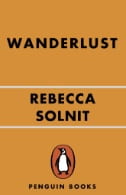
Ways of Seeing – John Berger
4 episode on seeing [link to the first one]
Ways of Seeing is a 1972 BBC four-part television series of 30-minute films created chiefly by writer John Berger and producer Mike Dibb. Berger’s scripts were adapted into a book of the same name. The series and book criticize traditional Western cultural aesthetics by raising questions about hidden ideologies in visual images.
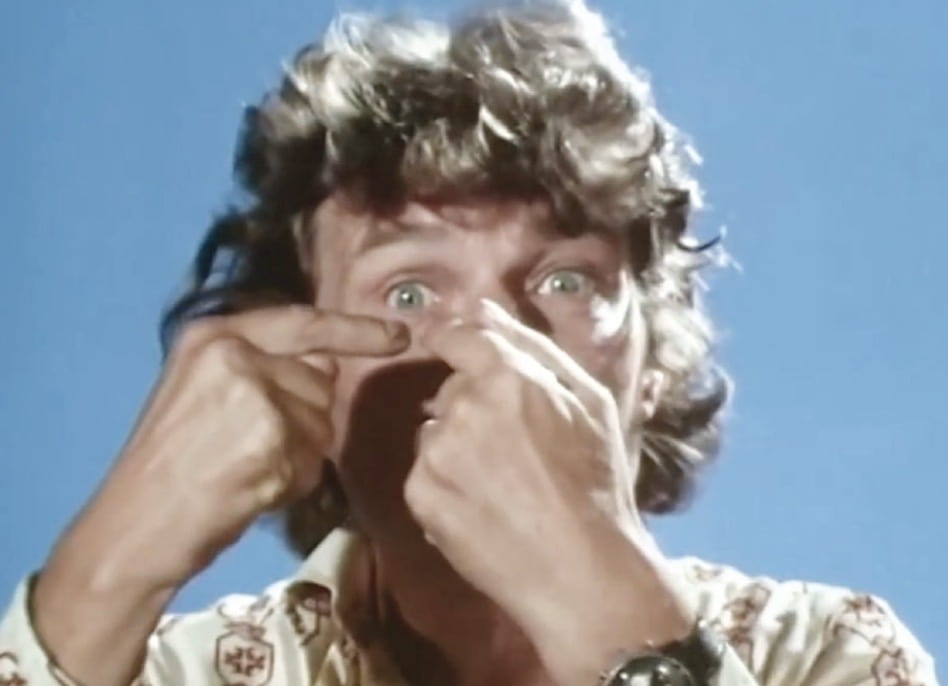
Why Walking Helps us Think
https://portfolio.newschool.edu/sound/files/2023/12/Why-Walking-Helps-Us-Think-_-The-New-Yorker.pdf
“What is it about walking, in particular, that makes it so amenable to thinking and writing? The answer begins with changes to our chemistry. When we go for a walk, the heart pumps faster, circulating more blood and oxygen not just to the muscles but to all the organs—including the brain. Many experiments have shown that after or during exercise, even very mild exertion, people perform better on tests of memory and attention….”
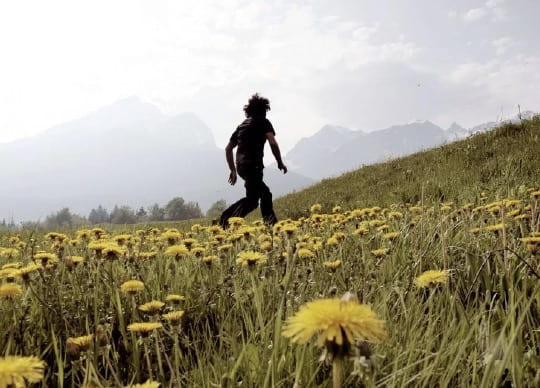
Listening and Place
Acts of Air – Reshaping the Urban Sonic
http://acts-of-air.crisap.org/
Project launched during lockdown.
An online exhibition for offline participation – 14 relational sound art works that offer a means to explore and interrogate our cities of sound
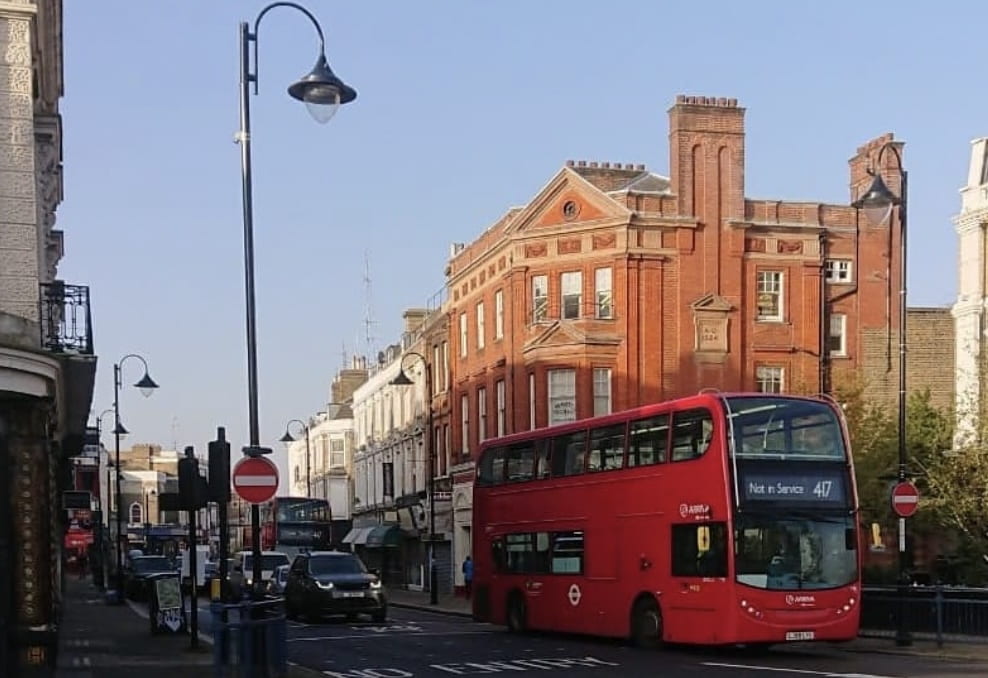
Listening to the City Handbook:
Community Research and Action through Sound and Story
https://www.colab.mit.edu/resources-1/2018/4/2/listening-to-the-city-handbook
a 181-page toolkit dedicated to furthering civic engagement as expressed in sound studies research, art, and pedagogy published by MIT CoLab.

Listen – Max Neuhaus
https://www.kim-cohen.com/Assets/CourseAssets/Texts/Neuhaus_LISTEN.pdf
Neuhaus was perhaps the first person to be dubbed a “sound artist”. His first works in this realm were invitations for audiences to experience urban sounds in new ways.

R. Murray Schafer – The Sounding City
https://www.david-howes.com/senses/sensing-the-city-lecture-RMurraySchafer.htm
Interview with the Canadian composer and writer about his work with sound in the city. Of particular note if his use of the work “soundmarks”:
“Every city will have its landmarks and the longer they remain in place, the more cherished they may become, although there are often political or social changes that can affect their survival. In the soundscape too, there are sounds that obtrude over the acoustic horizon. We call these soundmarks and we can define soundmarks as prominent sounds possessing properties of uniqueness, symbolic power, or other qualities that make them especially conspicuous or respectfully regarded.”
*** For more info on this influential but complicated figure, see this excellent 2-part podcast from the show Phantom Power
https://phantompod.org/ep-29-r-murray-schafer-1933-2021-pt-1/
https://phantompod.org/ep-30-r-murray-schafer-pt-2-critiques-and-contradictions/
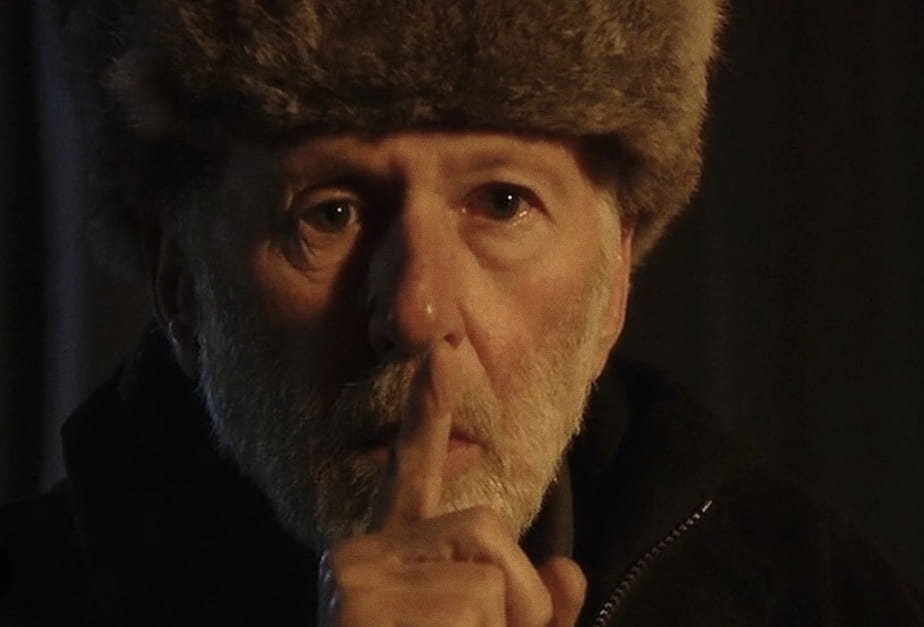
The Science and Art of Listening – Seth Horowitz (NY Times)
https://drive.google.com/file/d/1M3XejZpzlrPypp63Jp-QHwjS0WKXd2Zx/view?usp=sharing
“Hearing is a vastly underrated sense. We tend to think of the world as a place that we see, interacting with things and people based on how they look. Studies have
shown that conscious thought takes place at about the same rate as visual recognition, requiring a significant fraction of a second per event. But hearing is a quantitatively faster sense. While it might take you a full second to notice something out of the corner of your eye, turn your head toward it, recognize it and respond to it,
the same reaction to a new or sudden sound happens at
least 10 times as fast.”
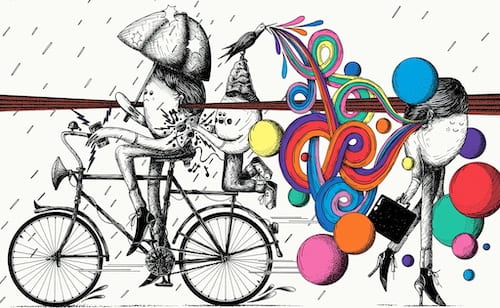
Soundcities
https://soundcities.com/
Soundcities was the first online open source database of global city sounds and soundmaps, using found sounds and field recording. There are now thousands of sounds from around the world on the website. This project allows the audience the possibility to remix the thousands of sampled recordings in an online database. The sounds can be listened to, used in performances, or played on mobiles via wireless networks. The soundcities database is also open so anyone can upload sounds they collect from world cities, thereby making a valuable and collaborative contribution to the project and helping to make this online sound archive.
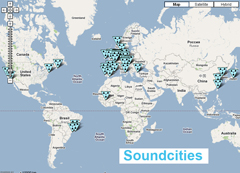
Ultra-Red – Five Protocols for Listening
https://izk.tugraz.at/data/uploads/2017/03/02_five_protocols_for_organized_listening.pdf
a 181-page toolkit dedicated to furthering civic engagement as expressed in sound studies research, art, and pedagogy published by MIT CoLab.
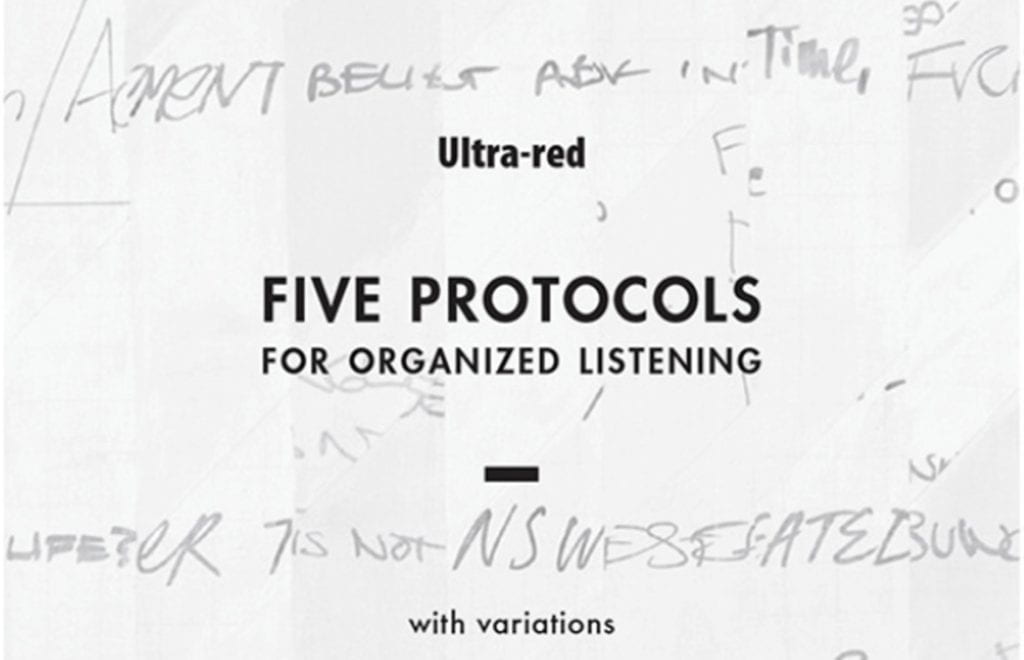
Soundwalking
Deep Listening Walks – Kathy Hinde
https://kathyhinde.co.uk/deep-listening-walks/
“In May 2019, Kathy Hinde invited people to join her on a ‘Deep Listening Walk’ to focus on the hidden sounds of Europe’s largest blanket bog in The Flow Country in the far north of Scotland. Using specialist listening devices such as hydrophones, she made audible the sonic qualities of peat gently moving, and tuned in to the minuscule sounds emitted by small organisms living within this rich and biodiverse ecosystem. Blanket bog is a very special ecosystem, and the idea of ‘Deep Listening’ in this context was to listen into the peat at different depths, and to think about listening ‘back in time’ as these deep layers of peat have taken centuries to form, preserving organisms within its layers. What is it like to listen to these layers and different depths that hold deep time?”

Hildegard Westerkamp On Soundwalking
https://www.hildegardwesterkamp.ca/writings/writingsby/?post_id=13&title=soundwalking
a composer, radio artist and sound ecologist. She is a pioneering figure within the field of soundscape studies and sound ecology and an integral member of the World Soundscape Project. She presents soundscape workshops, performs, writes and lectures internationally.

Hearing Change in the Chocolate City: Soundwalking as Black Feminist Method
https://soundstudiesblog.com/2019/08/05/hearing-change-in-the-chocolate-city-soundwalking-as-black-feminist-method/
While we often think of soundwalks as engines of knowledge production, we must also consider that they may simultaneously silence divergent worldviews and perspectives of space and place.

Sounding Out! Series: Soundwalking while POC
https://soundstudiesblog.com/category/soundwalking-while-poc/
Since its inception at the World Soundscape Project in the 1970s, soundwalking has emerged as a critical method for sound studies research and artistic practice. Although “soundwalking” now describes a diversity of activities and purposes, critical discussions and reading lists still rarely represent or consider the experiences of people of color (POC).

The Buried Brook – https://www.cityaslivinglab.org/the-buried-brook
In the Spring of 2022, CALL commissioned composer and sound artist Kamala Sankaram to develop The Buried Brook, a free, interactive augmented reality sound walk. It traces the sonic geography of the buried Tibbetts Brook, which once flowed from Yonkers through the Bronx to the Harlem River. While walking along the former route of the buried brook, the app invites users to turn a sensitive ear toward the past, present, and future of Tibbetts.

Soundwalk examples
Rimini Protokol – The Walks
https://www.rimini-protokoll.de/website/en/project/the-walks
The Walks is an app with a collection of audio walks by Rimini Protokoll. Each walk is a short audio experience covering specific locations in your city and an invitation to rediscover and interact with your environment.
It only takes 20 minutes to do an audio walk. Get going whenever you want. You decide how many of the walks you’d like to do and in what order.
The stories and soundscapes in the short audio experiences are global in scope. The Walks connects people around the world in a local experience via the fundamental human act of walking.
Janet Cardiff – Her Long Black Hair
https://portfolio.newschool.edu/sound/2017/03/08/janet-cardiff-her-long-black-hair/
A 35-minute journey that begins at Central Park South and transforms an everyday stroll in the park into an absorbing psychological and physical experience. Cardiff takes each listener on a winding journey through Central Park’s 19th-century pathways, retracing the footsteps of an enigmatic dark-haired woman.
Loren Chasse –Footpath for Otic Ghosts
https://www.thirdangle.org/loren-chasse-soundwalk
A walk in the park is inherently about listening. It is a way we allow a conversation with a friend, as well as our thoughts, ideas, or emotions, to resonate freely. A path along an edge of water, a park bench, a clearing in the trees—each is its own type of resonator. And then there is that chink in a wall and the creek stones with water falling through them. The notch in a dying tree. A hollow metal handrail faintly ringing. A cupped hand at an angle to the wind.
Nikki Lindt -The Underground Sound Project
https://www.nlindt.com/the-underground-sound-project
‘The Underground Sound Project’ is a public art installation in Prospect Park, Brooklyn. It can be experienced remotely online at theundergroundsoundproject.com The work explores and reveals the world of underground sound that can be heard under our feet. Did you know deep, resonant sound can be heard inside trees? Among the roots of plants, in shifting soils, in streambeds, rivers, oceans, and even in mud?
Andrew Silvati – NYC Highline Soundwalk
https://soundstudiesblog.com/2019/01/31/so-podcast-73-nyc-highline-soundwalk/
In this podcast, PhD candidate Andrew J. Salvati explores the sounds of the New York City High Line– specifically those sounds of gentrification. Salvati explores how sound can reveal complex relationships and the uses of the High Line to the city around it, noting the rising inequality and the remaking of working class neighborhoods and small businesses. Exploring the High Line means is to explore museums, tourists, and most of all, construction. As Salvati says, “Here, in this tumult, is the city-as-palimpsest: the writing-over of the industrial past with a plutocratic future.” Take a listen to the sounds of urban beautification.
The Cultural Production of Listening
Nightcall Radio. Radio – anthropocene entanglements. By Kate Donovan
https://fusion-journal.com/issue/019-listening-in-the-anthropocene/nightcall-radio-radio-anthropocene-entanglements/
“Expanded listening can mean exploring the boundaries of human sensory perception, throughvarious practices and technologies, to try to listen beyond human capabilities, to realise,recognise and reckon with the limits of human sensory perception. It can mean paying attentionto the silence and silencing, the untold or forgotten stories, the perspectives and knowledgesthat fall out of dominant modes of historicising (Donovan“Listening beyond Radio, listening beyond History”). It can mean imagining, speculating, fictioning, as inHaraway’s SpeculativeFabulation (SF) (Haraway, Truman).10 But it can also mean to expand perspectives andconsider listening from a non-human or more-than-human position”
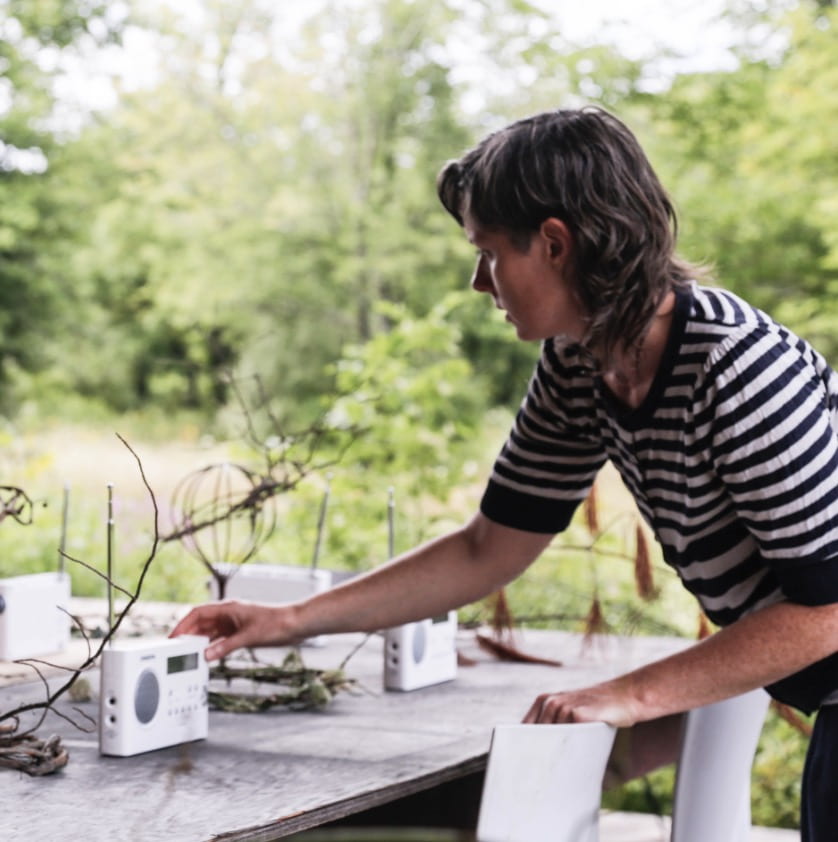
Tactical Soundwalking in the City – A Feminist Turn from Eye to Ear. by Stephanie Loveless
https://muse-jhu-edu.libproxy.newschool.edu/pub/6/article/775530
“This article investigates a turn from eye to ear in the literature and practice of walking-as-art. Arguing for listening as a feminist and ecologically oriented mode of engaging with the world, the author examines the practice of soundwalking (Westerkamp) and Deep Listening (Oliveros), placing them in conversation with the work of Michel de Certeau, and concludes with a discussion of the creative projects of Suzanne Thorpe, Viv Corringham and Amanda Gutierrez in order to chart the importance of relational listening practices today.”
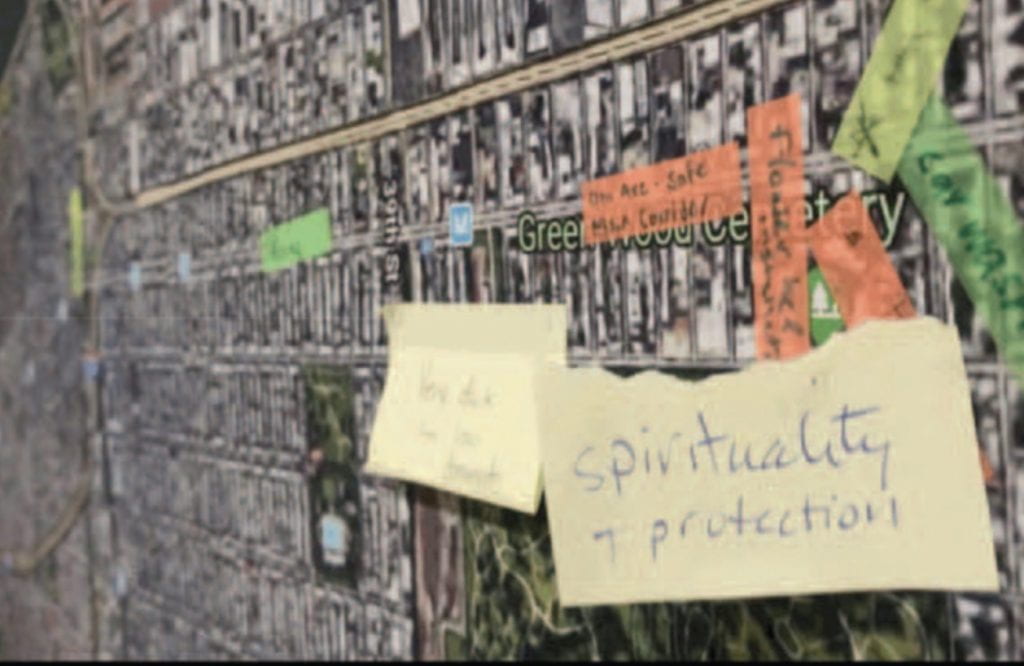
The Sonic Color Line – Race and the Cultural Politics of Listening – Jennifer Lynn Stoever
https://nyupress.org/9781479889341/
Race is a visual phenomenon, the ability to see “difference.” At least that is what conventional wisdom has lead us to believe. Yet, The Sonic Color Line argues that American ideologies of white supremacy are just as dependent on what we hear—voices, musical taste, volume—as they are on skin color or hair texture. Reinforcing compelling new ideas about the relationship between race and sound with meticulous historical research, Jennifer Lynn Stoever helps us to better understand how sound and listening not only register the racial politics of our world, but actively produce them. Through analysis of the historical traces of sounds of African American performers, Stoever reveals a host of racialized aural representations operating at the level of the unseen—the sonic color line—and exposes the racialized listening practices she figures as “the listening ear.”
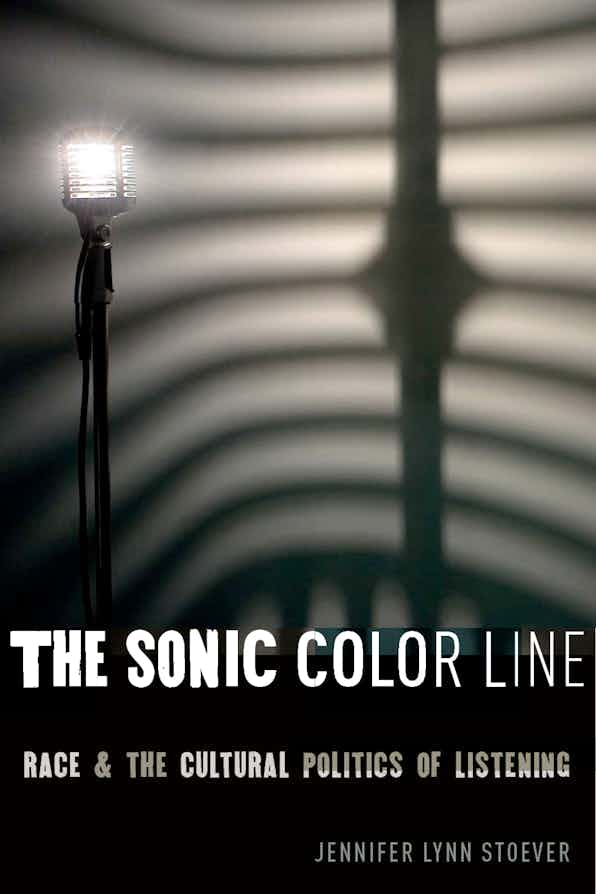
Field Recording
The Microphone Ear: Field Recording the Soundscape – Hildegard Westerkamp
https://www.hildegardwesterkamp.ca/writings/writingsby/?post_id=74&title=the-microphone-ear:-field-recording-the-soundscape
Westerkamp, also listed above in “Soundwalking” is a composer, radio artist and sound ecologist. In this writing she’s discussing her works for radio called Soundwalking. It’s worth reading the sections “Microphone Ears”, “The moving microphone”, “The searching microphone” the “The stationary microphone” for recording strategies in the field.
This is also an important statement:
“…the microphone does not make any choices. In itself it is without culture: the way it “listens” is determined entirely by its technical specifications and each recordist’s position and perspective, the physical, psychological, political and cultural stance shaping their choices. “

Podcasting tools and tips
Transom – Sam Greenspan
https://transom.org/2013/sam-greenspan/
“Sam Greenspan has made such an effective case for MEANDERING as a production tool that you’ll want to get up and take a stroll around the neighborhood. Sam’s argument draws on Charles Baudelaire and Walter Benjamin. And tells you how to wander productively in the world… and within the structure of your stories. Sam presents case studies with audio and lays out a philosophy: Be a Pilgrim! A Radical Pedestrian! You’ll be convinced.”

The Amazing Radio Vertikalisator
https://www.thirdcoastfestival.org/feature/amazing-radio-vertikalisator
Inspired by a Lego time machine her son built, Iceland-based independent producer Rikke Houd created a tool to help producers take advantage of the vast space radio offers.
In this Conference session, Rikke demonstrates how thinking about your story as an exercise in time travel can add depth, perspective and pleasure to your work.
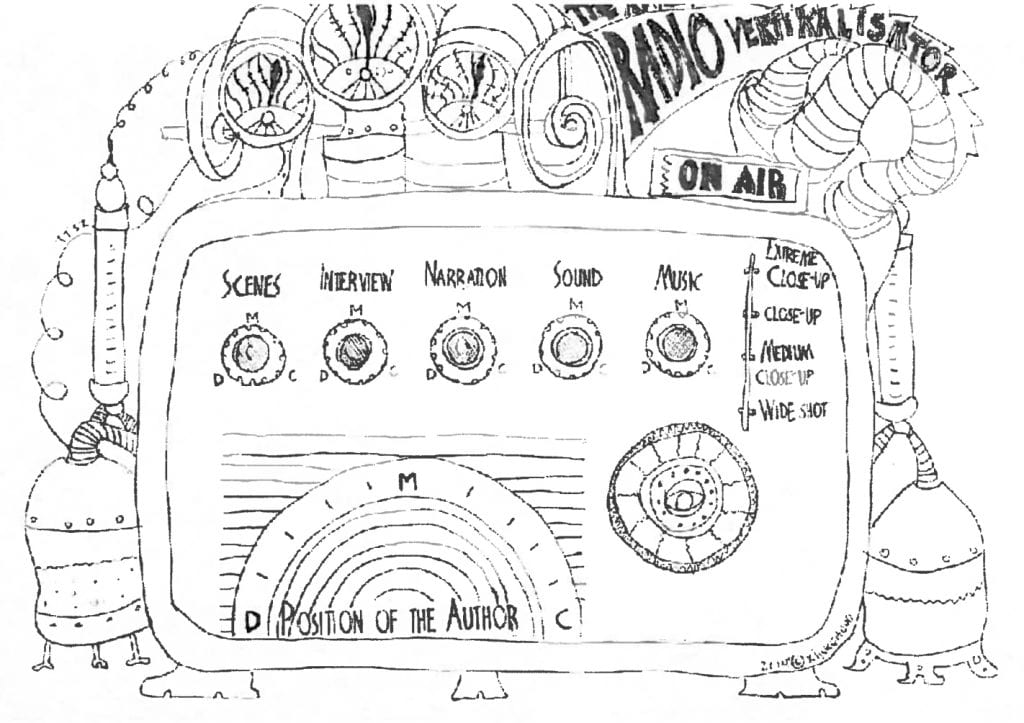
5 sound design tricks inspired by literature by Jeff Emtman
https://www.kcrw.com/culture/articles/5-sound-design-tricks-inspired-by-literature“Before I began designing sound for podcasts, I assumed that there was a certain sorcery to it. There isn’t. In fact, I discovered that I already knew all the fundamentals—I had learned them in my high school english classes.”
Podcasts, Radio and Sound Experiments
Container Ship Karaoke
https://www.bbc.co.uk/programmes/m0002zky
This episode from BBC’s Between the Ears is a great example of building an experience of a place through field recording. “Nathaniel Mann joins lonely seafarers on a giant container ship for some modern sea shanties. No bottles of rum, but some heartbreaking ballads and deep water sounds.”

Ensayos – Hydrofeminist METitations Listening Series
https://www.newmuseum.org/pages/view/ensayos-1
As part of their digital residency at the New Museum, Ensayos practitioners will launch three podcasts. Drawing from Ensayos’s transdisciplinary work, these podcasts will focus on waters in different archipelagic regions, including Tierra del Fuego, New York, eastern Australia, and Norway. Journalist Catalina Jaramillo guides listeners through four acts that mirror different aspects of Ensayos’s field research: fiction, fact, somatic exercise, and care ethics. Each concludes with a song.

Get Lower – Jeremy Toussaint- Baptiste
https://muse-jhu-edu.libproxy.newschool.edu/pub/6/article/775530
Toussaint-Baptiste recounts moments in his life when bass, emanating from a parked car or carnival, has shaken his walls, tested his nerves, and made him feel connected to other people, whether or not he appreciates the music blasting from their subwoofers. Ranging from the soundtrack of his childhood in Baton Rouge to the sonic maelstrom of J’ouvert in Brooklyn, Toussaint-Baptiste describes bass as a means for marginalized people to make an impression on an insensitive world. He listens to chopped-and-screwed cumbia, Ariana Grande, laptop speakers, Nelly, the passage of bass through subway tunnels, and frequencies too low to hear.”
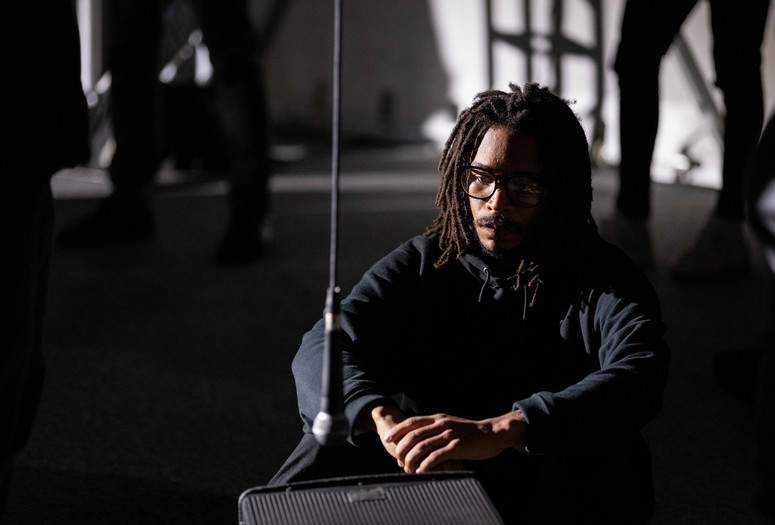
A Pause is not a Break – Jess Myers
https://www.htbdpodcast.com/apauseisnotabreak
“In architecture, we the practitioners of the built environment, have turned over our mode of communication so entirely to visual mediums, that we have been accused on many occasions of being poor listeners, poor readers, and perhaps, at the base of it, poor perceivers. What does the axonometric, the plan, the section, the elevation, the detail, the model miss? What have we failed to render in our visual pursuits?”

Los Gritos de Mexico – Felix Blume
https://felixblume.com/losgritosdemexico/
After several years strolling Mexico City in an exercise of deep listening and recording the soundscape, Félix Blume has synthesized in this work a huge collection of cries in the capital of this country, creating a kind of “aural mirror” of the sociopolitical context on these days. The piece has recruited awards and been broadcasted by much of the world, listening to it requires an active attitude of the listener.

Jane’s Walk – Sarah Montague (starts at 4:44)
https://www.localswitchboard.nyc/podcast/2022/6/3/take-a-walk
Every year since 2009, the Municipal Art Society of New York has organized “Jane’s Walk,” a series of tours on the hoof honoring the urban activist Jane Jacobs. This year, Local Switchboard’s Sarah Montague joined several.

John’s Podcast archive
https://portfolio.newschool.edu/sound/podcasts/
This is a collection of sound-focused podcasts on John’s sound resource site
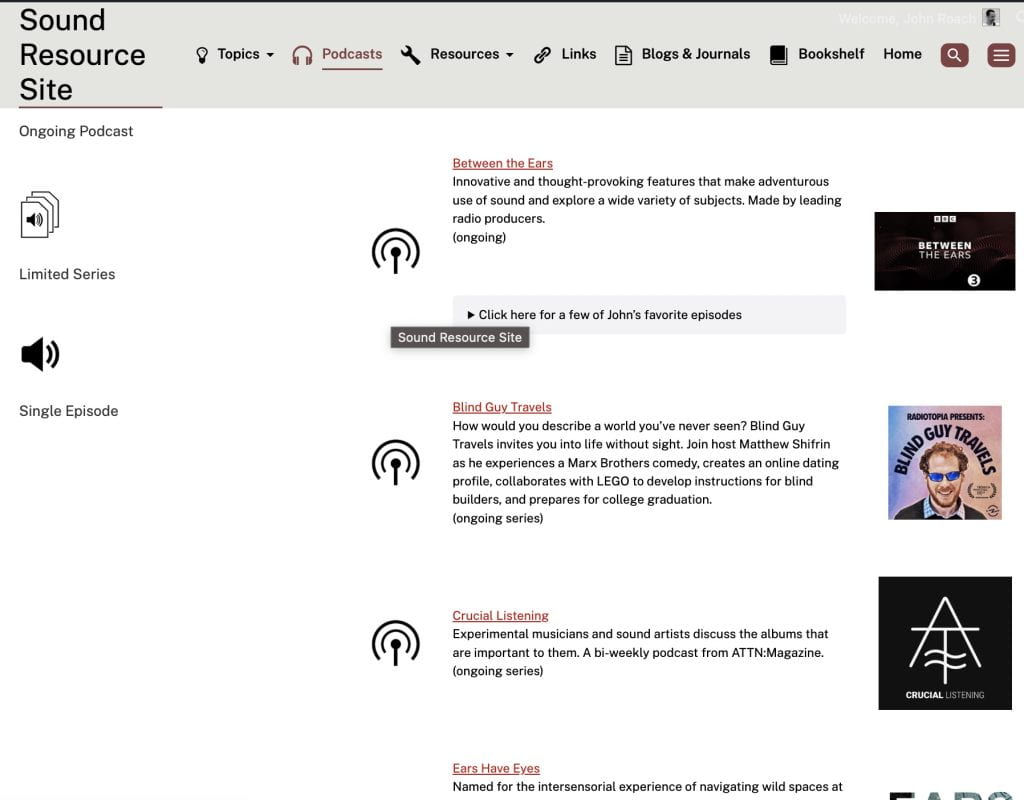
Kits Beach Soundwalk – Hildegard Westerkamp
https://youtu.be/hg96nU6ltLk?si=OhB_ifJXxigJW9Tf
(1989) In the late seventies I produced and hosted a radio program on Vancouver Co-operative Radio called “Soundwalking”, in which I took the listener to different locations in and around the city and explored them acoustically. “Kits Beach Soundwalk” is a compositional extension of this original idea.
New York IPS – New York City 24 hours in Public Places
https://www.ubu.com/media/sound/tellus_11/Tellus-11_05-New-York-City-24-hours-in-Public.mp3
A sonic day in the life of New York, produced with more than a dozen radio producers living in NYC. An excerpt on the right is from a longer work that can be heared HERE.
Sounds of my City – Tony Schwartz
https://www.youtube.com/watch?v=TesEGllSUgA
(1956) Sounds of My City: The Stories, Music and Sounds of the People of New York. Tracks in this sample: Introduction/City Street Sounds/People Sing, Dance and Pray.
Tony Schwartz was a highly influential media theorist, educator, media producer sound enthusiast. “His unusual but vital and influential career grew out of his passion for recording people and places, especially in his native New York. Though he suffered from agoraphobia, the prospect of exploring the sounds of the world outside kept pulling him out the door throughout his life.” – Library of Congress

Sounds from New York (Lincoln Center) – Tony Schwartz
https://blogs.loc.gov/now-see-hear/2023/08/tony-schwartz
Tony Schwartz lived in an area known as “San Juan Hill” and “Lincoln Square,” which stretched from West 59th to West 65th Street between Amsterdam and West End Avenues. In the mid 1950’s there were plans to raze the neighborhood to build the cultural complex known today as Lincoln Center and there was spirited but doomed resistance from the neighborhood’s residents
With his microphone and tape recorder, Schwartz documented what he saw as a living and breathing community. What he found in Lincoln Square went far beyond gang wars and, in spite of the neighborhood’s reputation for violence and crowded, decaying tenements, Schwartz found it to be the home of a rich and varied community that included African Americans, Puerto Ricans, Italians and others.
On September 23, 1962, the day before the first new building in Lincoln Center, Philharmonic Hall, opened, Schwartz broadcast a 15-minute collection of his Lincoln Square recordings on WBAI, reminding listeners in sound of what they could no longer see, and hoping that some of the culture that neighborhood once housed might find its way back there. (excerpted from Library of Congress)

Times3 (TIMES X TIMES X TIMES) – Pamela Z and Geoff Sobelle
“Take a walk in Times Square and hear a score crafted specifically for your experience. Or listen in the comfort of your home and imagine a city carved by countless hands from a place once thick with trees… which may be headed that way again. This music, created through impressions of a space, was composed for listeners to tune themselves to the forces underfoot, back in time, and down the road. It is a soundscape created for you to experience the city.” – Prototype Festival
You can read more about the project in this New York Times article: https://www.nytimes.com/2021/01/07/arts/music/pamela-z-prototype-festival-music.html
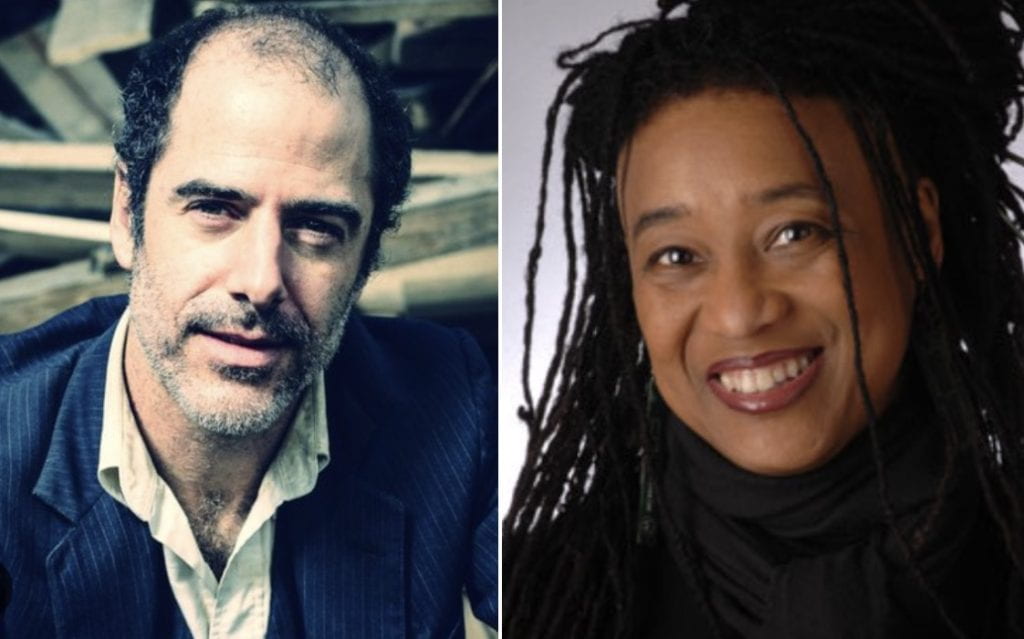
Zones Portuaires –Éric la Casa & Cédric Peyronne
https://swarming.bandcamp.com/album/zones-portuaires
The number of sound sources available in large harbour areas such as Le Havre in France and Liège in Belgium is immense. The coexistence of natural elements, uninhabited areas and industrial areas allow for special and interesting audio captures. In most of these cases the captures originated in locations that relate to the presence of human activities. The recording of many of these captures in Zones Portuaires was structured by the daily work schedules that dominate the areas, and many were captured in places normally forbidden to the public. Eric La Casa and Cédric Peyronnet decided to work separately: the work is divided into two different CDs
… more in the link above
6°30’33.372”N 3°22’0.66” – Emeka Ogboh https://emekaogboh.bandcamp.com/album/6-30-33372-n-3-22-066-e
Nigerian sound and installation artist Emeka Ogboh’s album 6°30′33.372″N 3°22′0.66″ E “turns its hyper-specific geographical focus toward the sounds and voices within the city’s Ojuelegba bus station and its environs. It’s a sonic “zooming-in” to the anarchic, self-organized urban node at a critical transformational juncture, previously immortalized on Fela Kuti’s legendary track and critique of post-colonial Lagos, Confusion.”
Radio Art and Transmission Arts organizations and resources
Earlid
https://www.earlid.org/
Earlid is an invitation. It’s an online gallery of evolving exhibits of sound art. It’s like a museum. It’s also like a radio program with occasional practitioner interviews transformed by Earlid’s radiophilic curator. There’s a striving to educate and inform rather than criticize or interpret.

Ears have Eyes
https://hibernationproject.ca/ears-have-eyes/
Named for the intersensorial experience of navigating wild spaces at night (when our ears prick like eyes squinting into the darkness) EARS HAVE EYES asks: what can the invisibility of sound illuminate? How does the intimacy of listening open our eyes to ideas we might otherwise overlook? What can sonorous spaces hold that physical spaces cannot? How do we look with our ears, and listen with our eyes?
….more info in the link.

The Hibernation Project
https://hibernationproject.ca/
The Hibernation Project is a domestic art intervention occurring annually from Winter to Spring. A tool for embracing – and combating – Winter in Canada, each weekend an open community of artists, musicians, and participants respond to a theme, installing work for the duration of one night. The project started in our house and yard in the Calgary/Mohkinstsis neighbourhood of Ramsay, and expanded at the beginning of the COVID-19 pandemic to include abstract locations spanning virtual, auditory, public, interstitial, and time-based spaces, leveraging analog technologies like radio and public amenities like parking lots as experimental venues for art.
….more info in the link.
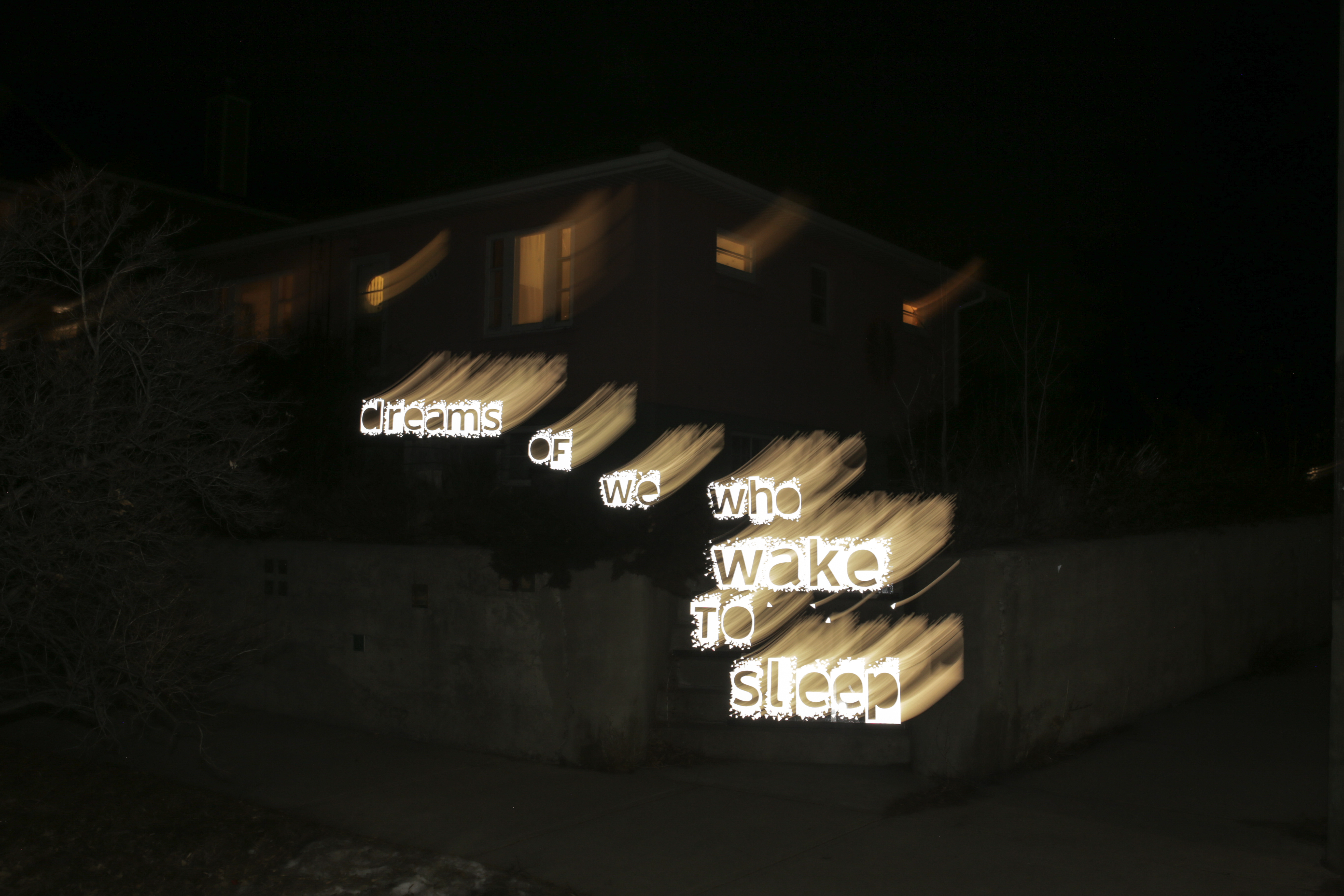
The Lake
https://thelakeradio.com/
The Lake is a place for music and sounds. The radio stream runs at all hours of the day and is randomized. No one knows what The Lake plays next.
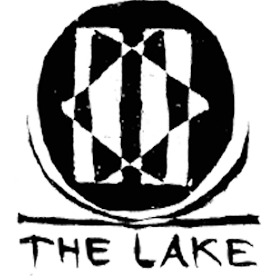
Montez Press Radio
https://radio.montezpress.com/
Montez Press Radio is an experimental broadcasting and performance platform. We were founded in 2018 with the goal of fostering greater experimentation and conversation between artists, writers, and thinkers through the medium of radio. This platform invites different corners of the art world to interact with each other in person and on air—a place where media finally meets flesh. We’re drawn to art that exists in the unexpected, the authenticity of sharing without a script, the sounds of ideas in the making, conversation that forgets there’s an audience. We also like books. All of our in-studio broadcasts are free and open to the public. Stop by when we’re live at 46 Canal Street #2 in NYC or look at the upcoming schedule to see if we’re off-site and broadcasting near you. Queries and programming proposals can be sent to radio@montezpress.com or message us on Instagram.
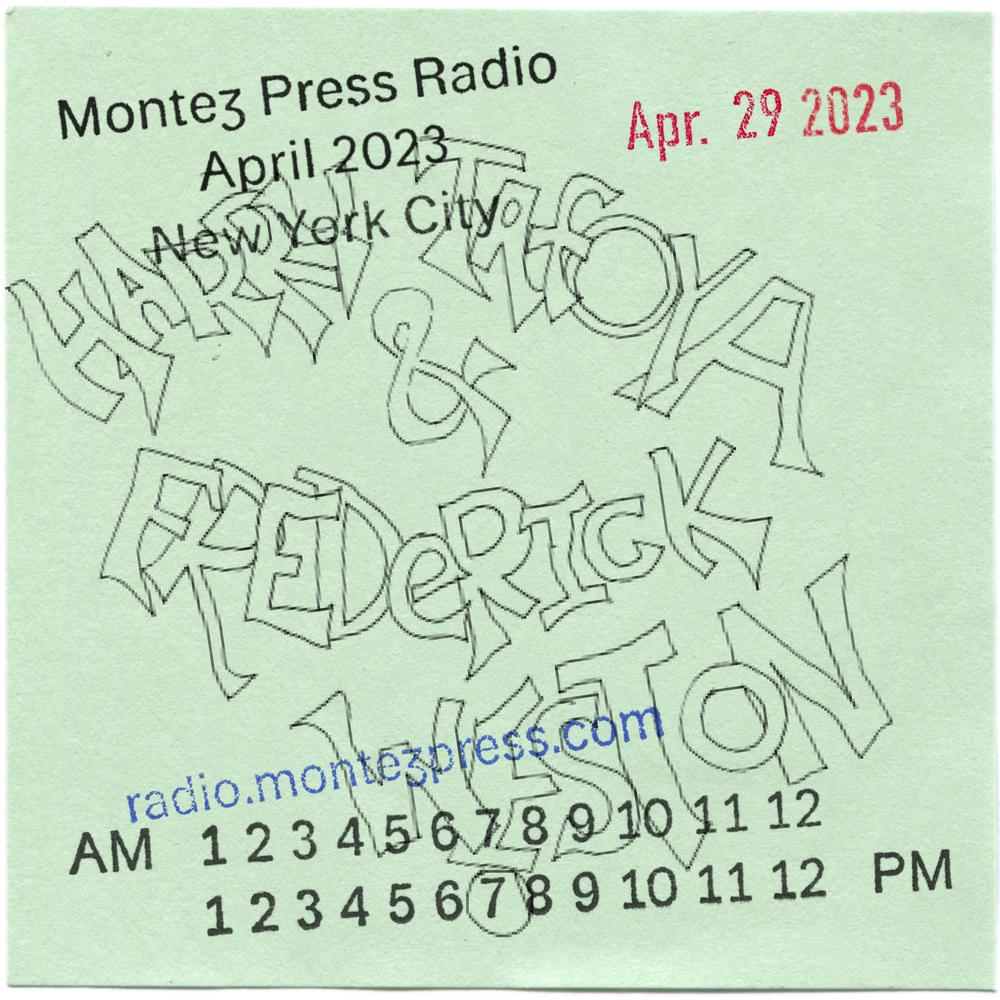
Radiophrenia
https://radiophrenia.scot/
RADIOPHRENIA is a temporary art radio station broadcasting intermittently from the Centre for Contemporary Arts in Glasgow.
The broadcast schedule includes newly commissioned radio works, Live-to-Air performances as well as live studio shows, screenings, shorts and pre-recorded feasures. The majority of the programme is made up from selections submitted to an international open call for sound art and radio works.
Radiophrenia first began broadcasting in April 2015 with subsequent editions in 2016, 2017, 2019, 2020 and 2022. The websites from our previous festivals have been archived below.
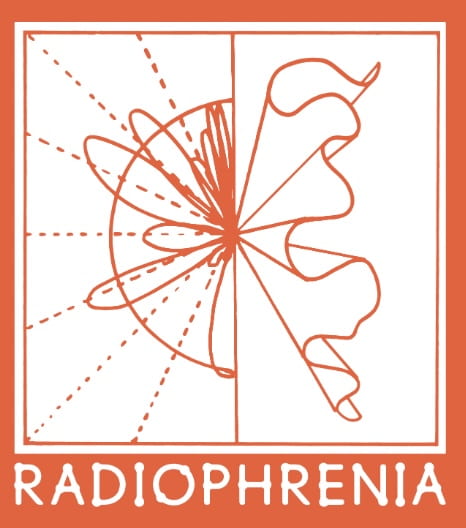
Semi Silent
https://semisilent.ro/
Podcast platform for sound art, radio art and field recording
We started in 2016 with sound pieces using field recordings in podcasts for a Bucharest sound ecology: the exploration/recording/transformation/transmission of urban intimate memories.
….more info in the link.

Transom
https://transom.org/about/about-transom/
Transom channels new work, voices, and ideas into public media through the Internet and workshops. Our goal is to be useful and inspiring. Transom is a performance space, an open editorial session, an audition stage, a library, and a hangout. Our purpose is to pass the baton of mission and good practice in public media through tools, philosophy, and technique.

Ubuweb
https://www.ubu.com/sound/index.html
A treasure trove of sound experiments. While it is not limited to any particular genre it DOES focus on experimental sound works and includes radio and transmission, avant garde music, sound installations and more.
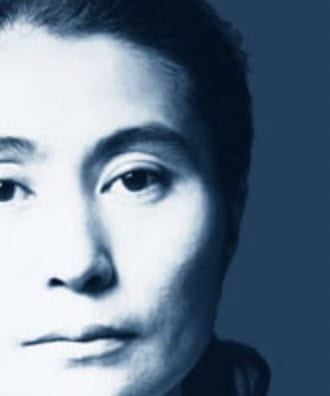
UK Radio Drama Festival
https://radiodramafestival.org.uk/
The festival aims to bring diverse work from across the world, introducing a UK audience to the European tradition of audio drama often anchored in soundscape whilst celebrating our own more text based tradition. The festival provides a UK audience with the rare pleasure of listening to audio drama in other languages, supported by English language translations of the script. The festival also brings together work from national broadcasters with that of emerging independent producers and is proud that the major prizes have largely been awarded to this exciting but lesser known work. Also this link to a 2023 playlist of works: https://soundcloud.com/radiodramafest/sets/awards-2023
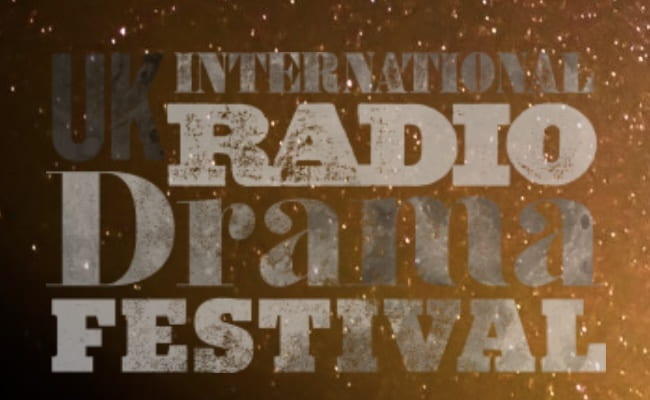
Wave Farm
https://wavefarm.org
Wave Farm is an international transmission arts organization driven by experimentation with the electromagnetic spectrum. We cultivate creative practices in radio and support artists and nonprofits in their cultural endeavors.
Based in New York’s Upper Hudson Valley, Wave Farm is a media arts center, media platform, and arts service organization. Wave Farm offers interdisciplinary outdoor installations, residencies and fellowships, and a research library. We operate FM radio station WGXC and host many online radio channels. Wave Farm provides fiscal sponsorship, consultation, and grants to artists and organizations.
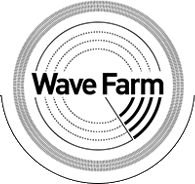
Sound Artists, Broadcasters, and Podcasters (a list)
Ana Kravets
https://soundcloud.com/anna-kravets
Anna Friz
https://nicelittlestatic.com/
Jess Myers
https://www.htbdpodcast.com/about
Katie Semro
https://katiesemro.com
Joan Schuman
https://www.joanschuman.com/html/audio.html
Sisters Acousmatica
https://www.sistersakousmatica.org/
Yvette Jeanine Jackson
https://www.yvettejackson.com/about
More Examples (a List)
- Interactive documentary, MS DUE alumni Sana Akram
http://www.littlepakistan.net/#Subway_Selection

